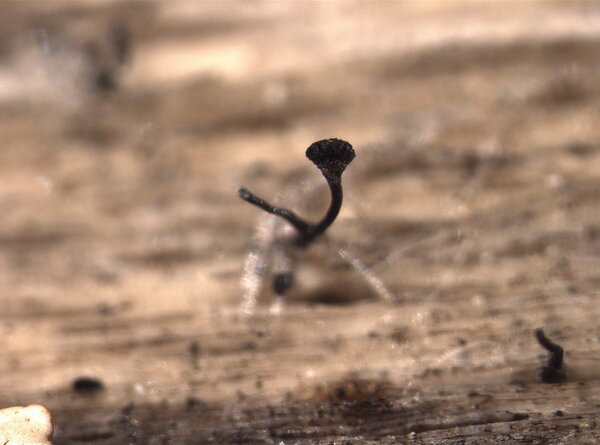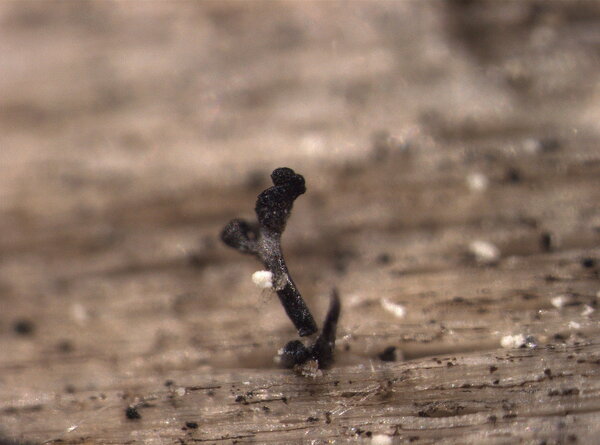Mycocalicium subtile (Pers.) Szatala
Magyar Bot. Lapok, 24: 47, 1926. Basionym: Calicium subtile Pers. - Tent. Disp. Meth. Fung. Suppl.: 60, 1797.
Synonyms: Calicium minutellum Ach.; Calicium parietinum Ach.; Mycocalicium minutellum (Ach.) Nádv.; Mycocalicium parietinum (Ach.) Vain.
Distribution: N - Frl (Puntillo & Puntillo 2009, Obermayer 2022), Ven (Nascimbene 2008c, Puntillo & Puntillo 2009, Nascimbene & al. 2013b), TAA (Nascimbene & al. 2007b, Puntillo & Puntillo 2009, Nascimbene 2014, Nascimbene & Marini 2015, Trindade & al. 2021), Lomb (Puntillo & Puntillo 2009), Piem (Isocrono & al. 2004, Puntillo & Puntillo 2009). C - Tosc (Benesperi & al. 2007, Puntillo & Puntillo 2009), Marc (Puntillo & Puntillo 2009), Umb (Ravera 2000, Ravera & al. 2006), Laz (Ravera 2008, Ravera & Genovesi 2008), Abr (Nascimbene & al. 2021), Mol (Puntillo & Puntillo 2009), Sar (Puntillo & Puntillo 2009). S - Bas (Puntillo & al. 2009, 2012), Cal (Puntillo 1994, 1996, Puntillo & Puntillo 2009).
Description: Thallus not evident, not lichenized. Apothecia stalked, black to dark brown, 0.4-1(-2) mm high, the stalk 0.04-0.1 µm thick, consisting of periclinally arranged, dark greenish brown to brown hyphae, the outer ones darker pigmented than the inner ones. Capitulum obconical to lenticular, 0.2-0.3 mm across, with a convex upper surface. Exciple brown, thin to rather thick, 15-50 µm wide, consisting of 3-4 layers of periclinally arranged hyphae; mazaedium absent; hypothecium broadly obconical, dark brown. Asci cylindrical, 39-42 x 3-3.5 µm, formed singly, with a single functional layer, strongly and uniformly thickened at apex, without a canal, with uniseriately arranged ascospores, persisting until the spores are mature. Ascospores 1-celled, dark brown, ellipsoid to fusiform, flattened, (5.5-)7-9(-11) x (2.5-)3.5-4(-5) µm, with a smooth or irregularly and minutely verrucose wall. Pycnidia black, with a distinct apical pore. Conidia more or less curved, pale brown, 4-5 x 1-1.5 µm. Photobiont absent. Spot tests: stalk K- or K+ slightly reddish brown, N- or N+ slightly intensified reddish brown. Chemistry: without lichen substances.Note: a saprophyte on dry, hard lignum, especially of conifers, in open situations, mostly in the montane and subalpine belts.
Growth form: Fungus
Substrata: lignum
Reproductive strategy: mainly sexual
Commonnes-rarity: (info)
Alpine belt: absent
Subalpine belt: rather rare
Oromediterranean belt: extremely rare
Montane belt: very rare
Submediterranean belt: absent
Padanian area: absent
Humid submediterranean belt: absent
Humid mediterranean belt: absent
Dry mediterranean belt: absent
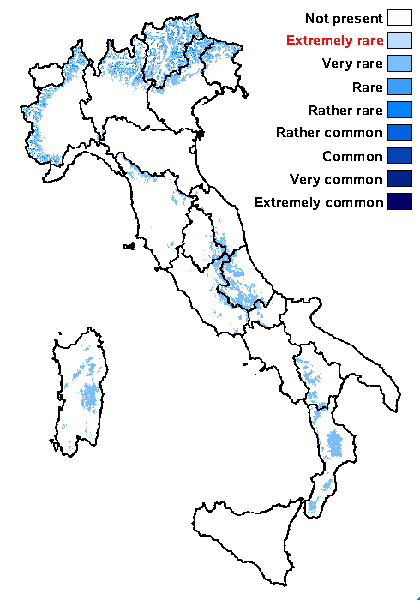
Predictive model
Herbarium samples
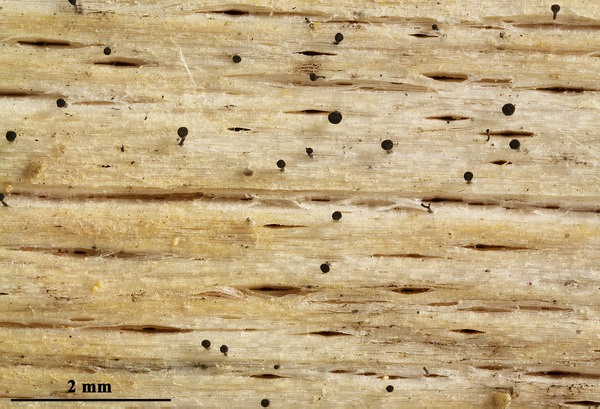

Felix Schumm - CC BY-SA4.0
[12653], Germany, Baden-Württemberg, Kreis Sigmaringen, 4 km nördlich von Irndorf im Irndorfer Hardt, am Holz eines abgestorbenen Baumstammes, TK 7919. Leg. F. Schumm 20.09.2006, det. F. Schumm 2006.


Felix Schumm - CC BY-SA4.0
[12653], Germany, Baden-Württemberg, Kreis Sigmaringen, 4 km nördlich von Irndorf im Irndorfer Hardt, am Holz eines abgestorbenen Baumstammes, TK 7919. Leg. F. Schumm 20.09.2006, det. F. Schumm 2006.
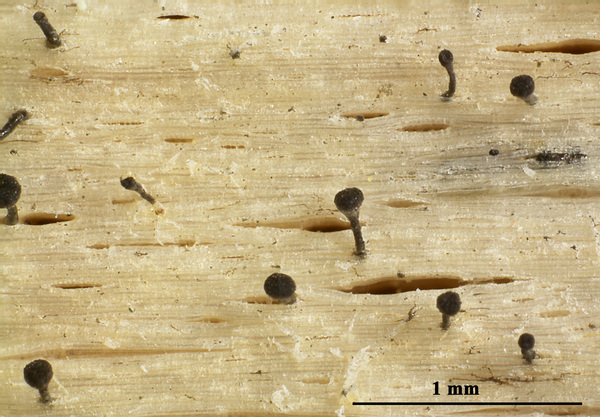

Felix Schumm - CC BY-SA4.0
[12653], Germany, Baden-Württemberg, Kreis Sigmaringen, 4 km nördlich von Irndorf im Irndorfer Hardt, am Holz eines abgestorbenen Baumstammes, TK 7919. Leg. F. Schumm 20.09.2006, det. F. Schumm 2006.


Felix Schumm - CC BY-SA4.0
[12653], Germany, Baden-Württemberg, Kreis Sigmaringen, 4 km nördlich von Irndorf im Irndorfer Hardt, am Holz eines abgestorbenen Baumstammes, TK 7919. Leg. F. Schumm 20.09.2006, det. F. Schumm 2006.
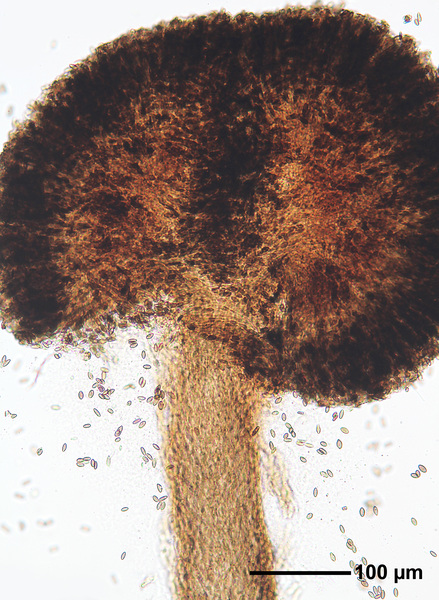

Felix Schumm - CC BY-SA4.0
[12653], Germany, Baden-Württemberg, Kreis Sigmaringen, 4 km nördlich von Irndorf im Irndorfer Hardt, am Holz eines abgestorbenen Baumstammes, TK 7919. Leg. F. Schumm 20.09.2006, det. F. Schumm 2006.


Felix Schumm - CC BY-SA4.0
[12653], Germany, Baden-Württemberg, Kreis Sigmaringen, 4 km nördlich von Irndorf im Irndorfer Hardt, am Holz eines abgestorbenen Baumstammes, TK 7919. Leg. F. Schumm 20.09.2006, det. F. Schumm 2006.
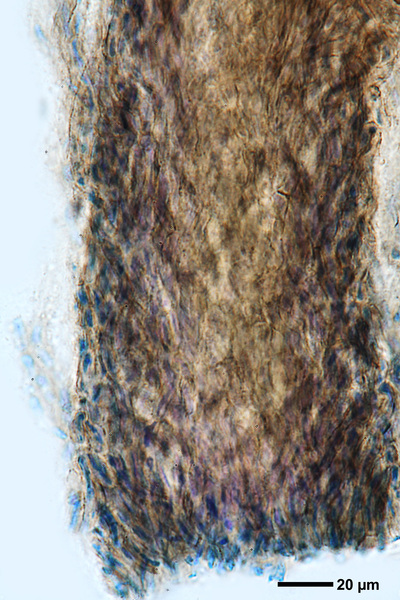

Felix Schumm - CC BY-SA4.0
[12653], Germany, Baden-Württemberg, Kreis Sigmaringen, 4 km nördlich von Irndorf im Irndorfer Hardt, am Holz eines abgestorbenen Baumstammes, TK 7919. Leg. F. Schumm 20.09.2006, det. F. Schumm 2006.
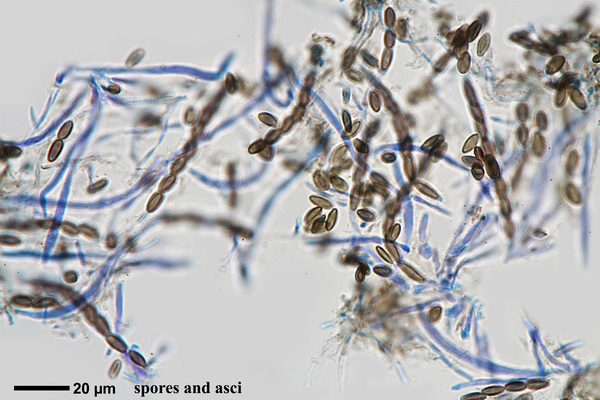

Felix Schumm - CC BY-SA4.0
[12653], Germany, Baden-Württemberg, Kreis Sigmaringen, 4 km nördlich von Irndorf im Irndorfer Hardt, am Holz eines abgestorbenen Baumstammes, TK 7919. Leg. F. Schumm 20.09.2006, det. F. Schumm 2006.
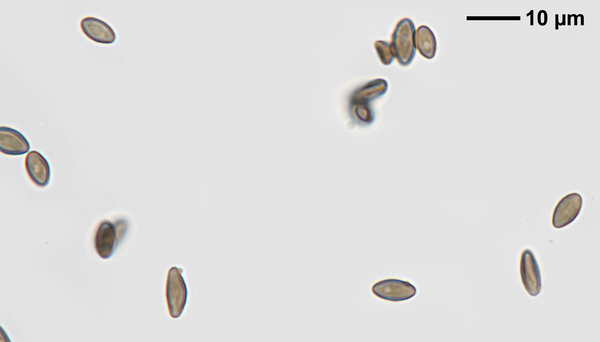

Felix Schumm - CC BY-SA4.0
[12653], Germany, Baden-Württemberg, Kreis Sigmaringen, 4 km nördlich von Irndorf im Irndorfer Hardt, am Holz eines abgestorbenen Baumstammes, TK 7919. Leg. F. Schumm 20.09.2006, det. F. Schumm 2006.
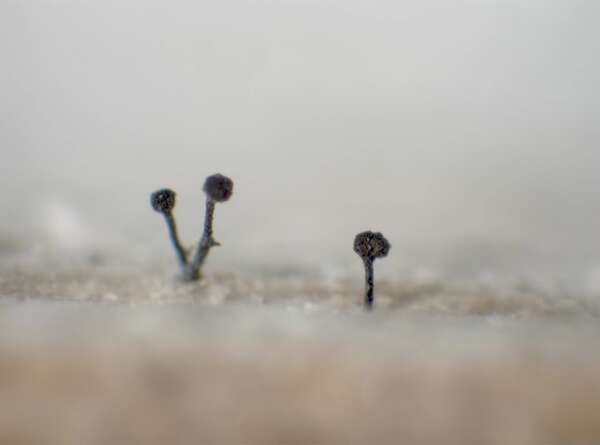

P.L. Nimis; Owner: Department of Life Sciences, University of Trieste
Herbarium: TSB (11505)
2001/12/05


P.L. Nimis; Owner: Department of Life Sciences, University of Trieste
Herbarium: TSB (15353)
2001/12/05
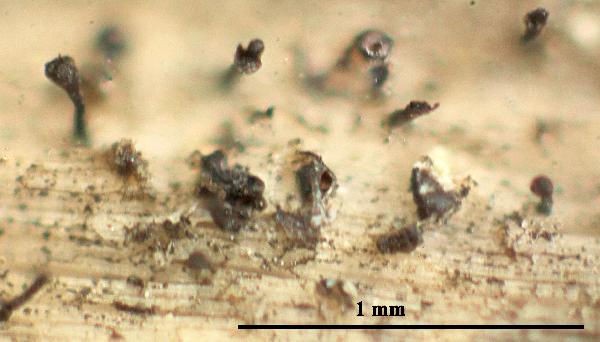

Felix Schumm - CC BY-SA 4.0
[20880], Austria, Kärnten (=Carinthia), Eastern Alps, Styrian Fringe
Mountains, Koralpe,14 km NE of the centre of Wolfsberg, path from
Stoffhütte (on Styrian side) to Bärofen (on the Carinthian side),
46°53'15'' N, 15°00'50'' E, 1560 m, conifer forest (on a gently inclined,
north-facing slope, on snag of Picea abies. Leg. J. Hafellner (70771) &
L. Muggia, 35.06.2006, det J. Hafellner. EX W. OBERMAYER: LICHENOTHECA
GRAECENSIS NR. 488.
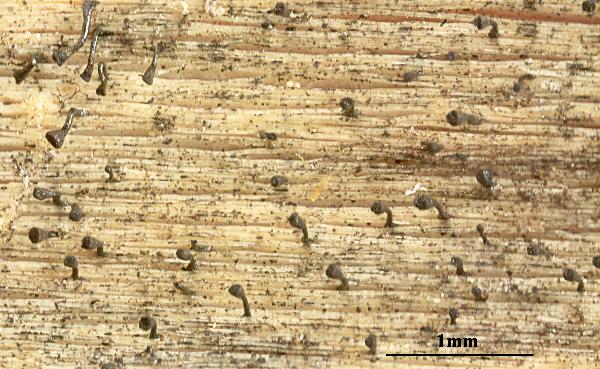

Felix Schumm - CC BY-SA 4.0
[20880], Austria, Kärnten (=Carinthia), Eastern Alps, Styrian Fringe
Mountains, Koralpe,14 km NE of the centre of Wolfsberg, path from
Stoffhütte (on Styrian side) to Bärofen (on the Carinthian side),
46°53'15'' N, 15°00'50'' E, 1560 m, conifer forest (on a gently inclined,
north-facing slope, on snag of Picea abies. Leg. J. Hafellner (70771) &
L. Muggia, 35.06.2006, det J. Hafellner. EX W. OBERMAYER: LICHENOTHECA
GRAECENSIS NR. 488.
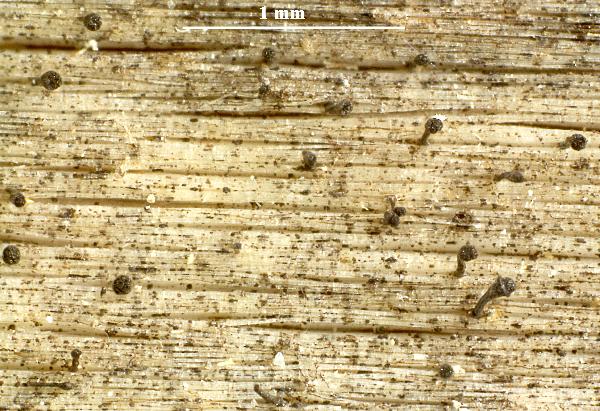

Felix Schumm - CC BY-SA 4.0
[20880], Austria, Kärnten (=Carinthia), Eastern Alps, Styrian Fringe
Mountains, Koralpe,14 km NE of the centre of Wolfsberg, path from
Stoffhütte (on Styrian side) to Bärofen (on the Carinthian side),
46°53'15'' N, 15°00'50'' E, 1560 m, conifer forest (on a gently inclined,
north-facing slope, on snag of Picea abies. Leg. J. Hafellner (70771) &
L. Muggia, 35.06.2006, det J. Hafellner. EX W. OBERMAYER: LICHENOTHECA
GRAECENSIS NR. 488.
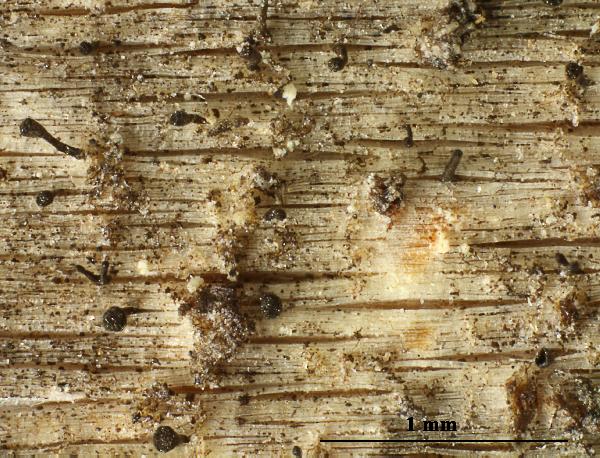

Felix Schumm - CC BY-SA 4.0
[20880], Austria, Kärnten (=Carinthia), Eastern Alps, Styrian Fringe
Mountains, Koralpe,14 km NE of the centre of Wolfsberg, path from
Stoffhütte (on Styrian side) to Bärofen (on the Carinthian side),
46°53'15'' N, 15°00'50'' E, 1560 m, conifer forest (on a gently inclined,
north-facing slope, on snag of Picea abies. Leg. J. Hafellner (70771) &
L. Muggia, 35.06.2006, det J. Hafellner. EX W. OBERMAYER: LICHENOTHECA
GRAECENSIS NR. 488.
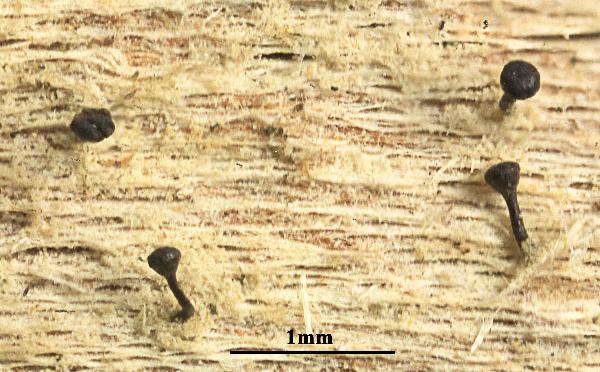

Felix Schumm - CC BY-SA 4.0
[12238], Schweiz: Valais. Val d'Arolla, pine-larch wood on the steep
western slopes of Petite and Grande Dent de Veisivi above La Gouille
and Satarma, on barkless, aged and faded skeletons of Pinus cembra,
1900-2100 m, mainly W-SW exposition,locally abundant. Leg. et det.
G. Follmann et M. Schulz, 08.1994. EX G. FOLLMANN & B.
WERNER: LICHENES EXSICCATI SELECTI AB INSTITUTO BOTANICO
UNIVERSITATIS COLONIENSIS EDITI NR. 512.


Felix Schumm - CC BY-SA 4.0
[12238], Schweiz: Valais. Val d'Arolla, pine-larch wood on the steep
western slopes of Petite and Grande Dent de Veisivi above La Gouille
and Satarma, on barkless, aged and faded skeletons of Pinus cembra,
1900-2100 m, mainly W-SW exposition,locally abundant. Leg. et det.
G. Follmann et M. Schulz, 08.1994. EX G. FOLLMANN & B.
WERNER: LICHENES EXSICCATI SELECTI AB INSTITUTO BOTANICO
UNIVERSITATIS COLONIENSIS EDITI NR. 512.
Growth form: Fungus
Substrata: lignum
Reproductive strategy: mainly sexual
Commonnes-rarity: (info)
Alpine belt: absent
Subalpine belt: rather rare
Oromediterranean belt: extremely rare
Montane belt: very rare
Submediterranean belt: absent
Padanian area: absent
Humid submediterranean belt: absent
Humid mediterranean belt: absent
Dry mediterranean belt: absent

Predictive model
| Herbarium samples |


Felix Schumm - CC BY-SA4.0
[12653], Germany, Baden-Württemberg, Kreis Sigmaringen, 4 km nördlich von Irndorf im Irndorfer Hardt, am Holz eines abgestorbenen Baumstammes, TK 7919. Leg. F. Schumm 20.09.2006, det. F. Schumm 2006.


Felix Schumm - CC BY-SA4.0
[12653], Germany, Baden-Württemberg, Kreis Sigmaringen, 4 km nördlich von Irndorf im Irndorfer Hardt, am Holz eines abgestorbenen Baumstammes, TK 7919. Leg. F. Schumm 20.09.2006, det. F. Schumm 2006.


Felix Schumm - CC BY-SA4.0
[12653], Germany, Baden-Württemberg, Kreis Sigmaringen, 4 km nördlich von Irndorf im Irndorfer Hardt, am Holz eines abgestorbenen Baumstammes, TK 7919. Leg. F. Schumm 20.09.2006, det. F. Schumm 2006.


Felix Schumm - CC BY-SA4.0
[12653], Germany, Baden-Württemberg, Kreis Sigmaringen, 4 km nördlich von Irndorf im Irndorfer Hardt, am Holz eines abgestorbenen Baumstammes, TK 7919. Leg. F. Schumm 20.09.2006, det. F. Schumm 2006.


Felix Schumm - CC BY-SA4.0
[12653], Germany, Baden-Württemberg, Kreis Sigmaringen, 4 km nördlich von Irndorf im Irndorfer Hardt, am Holz eines abgestorbenen Baumstammes, TK 7919. Leg. F. Schumm 20.09.2006, det. F. Schumm 2006.


Felix Schumm - CC BY-SA4.0
[12653], Germany, Baden-Württemberg, Kreis Sigmaringen, 4 km nördlich von Irndorf im Irndorfer Hardt, am Holz eines abgestorbenen Baumstammes, TK 7919. Leg. F. Schumm 20.09.2006, det. F. Schumm 2006.


Felix Schumm - CC BY-SA4.0
[12653], Germany, Baden-Württemberg, Kreis Sigmaringen, 4 km nördlich von Irndorf im Irndorfer Hardt, am Holz eines abgestorbenen Baumstammes, TK 7919. Leg. F. Schumm 20.09.2006, det. F. Schumm 2006.


Felix Schumm - CC BY-SA4.0
[12653], Germany, Baden-Württemberg, Kreis Sigmaringen, 4 km nördlich von Irndorf im Irndorfer Hardt, am Holz eines abgestorbenen Baumstammes, TK 7919. Leg. F. Schumm 20.09.2006, det. F. Schumm 2006.


Felix Schumm - CC BY-SA4.0
[12653], Germany, Baden-Württemberg, Kreis Sigmaringen, 4 km nördlich von Irndorf im Irndorfer Hardt, am Holz eines abgestorbenen Baumstammes, TK 7919. Leg. F. Schumm 20.09.2006, det. F. Schumm 2006.


P.L. Nimis; Owner: Department of Life Sciences, University of Trieste
Herbarium: TSB (11505)
2001/12/05


P.L. Nimis; Owner: Department of Life Sciences, University of Trieste
Herbarium: TSB (15353)
2001/12/05


Felix Schumm - CC BY-SA 4.0
[20880], Austria, Kärnten (=Carinthia), Eastern Alps, Styrian Fringe Mountains, Koralpe,14 km NE of the centre of Wolfsberg, path from Stoffhütte (on Styrian side) to Bärofen (on the Carinthian side), 46°53'15'' N, 15°00'50'' E, 1560 m, conifer forest (on a gently inclined, north-facing slope, on snag of Picea abies. Leg. J. Hafellner (70771) & L. Muggia, 35.06.2006, det J. Hafellner. EX W. OBERMAYER: LICHENOTHECA GRAECENSIS NR. 488.


Felix Schumm - CC BY-SA 4.0
[20880], Austria, Kärnten (=Carinthia), Eastern Alps, Styrian Fringe Mountains, Koralpe,14 km NE of the centre of Wolfsberg, path from Stoffhütte (on Styrian side) to Bärofen (on the Carinthian side), 46°53'15'' N, 15°00'50'' E, 1560 m, conifer forest (on a gently inclined, north-facing slope, on snag of Picea abies. Leg. J. Hafellner (70771) & L. Muggia, 35.06.2006, det J. Hafellner. EX W. OBERMAYER: LICHENOTHECA GRAECENSIS NR. 488.


Felix Schumm - CC BY-SA 4.0
[20880], Austria, Kärnten (=Carinthia), Eastern Alps, Styrian Fringe Mountains, Koralpe,14 km NE of the centre of Wolfsberg, path from Stoffhütte (on Styrian side) to Bärofen (on the Carinthian side), 46°53'15'' N, 15°00'50'' E, 1560 m, conifer forest (on a gently inclined, north-facing slope, on snag of Picea abies. Leg. J. Hafellner (70771) & L. Muggia, 35.06.2006, det J. Hafellner. EX W. OBERMAYER: LICHENOTHECA GRAECENSIS NR. 488.


Felix Schumm - CC BY-SA 4.0
[20880], Austria, Kärnten (=Carinthia), Eastern Alps, Styrian Fringe Mountains, Koralpe,14 km NE of the centre of Wolfsberg, path from Stoffhütte (on Styrian side) to Bärofen (on the Carinthian side), 46°53'15'' N, 15°00'50'' E, 1560 m, conifer forest (on a gently inclined, north-facing slope, on snag of Picea abies. Leg. J. Hafellner (70771) & L. Muggia, 35.06.2006, det J. Hafellner. EX W. OBERMAYER: LICHENOTHECA GRAECENSIS NR. 488.


Felix Schumm - CC BY-SA 4.0
[12238], Schweiz: Valais. Val d'Arolla, pine-larch wood on the steep western slopes of Petite and Grande Dent de Veisivi above La Gouille and Satarma, on barkless, aged and faded skeletons of Pinus cembra, 1900-2100 m, mainly W-SW exposition,locally abundant. Leg. et det. G. Follmann et M. Schulz, 08.1994. EX G. FOLLMANN & B. WERNER: LICHENES EXSICCATI SELECTI AB INSTITUTO BOTANICO UNIVERSITATIS COLONIENSIS EDITI NR. 512.


 INDEX FUNGORUM
INDEX FUNGORUM
 GBIF
GBIF
 DOLICHENS
DOLICHENS

